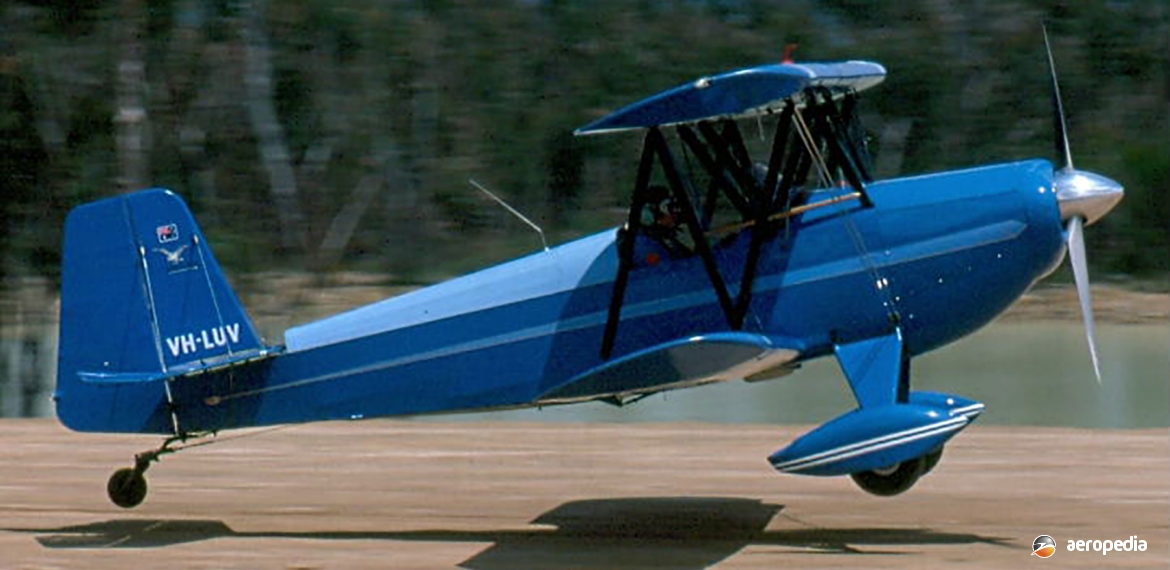Photograph:
Javelin Wichawk VH-LUV (c/n N125) at Wedderburn, NSW in November 1985 (David C Eyre)
Country of origin:
United States of America
Description:
Two/threeseat light sport biplane
Power Plant:
One 134 kw (180 hp) Lycoming O-360 four-cylinder horizontally-opposed air-cooled engine
Specifications:
- Wingspan: 7.32 m (24 ft)
- Length: 5.87 m (19 ft 3 in)
- Height: 2.18 m (7 ft 2 in)
- Wing area: 17.3 m² (185 sq ft)
- Max speed at sea level: 225 km/h (140 mph)
- Cruising speed: 204 km/h (127 mph)
- Stalling speed: 90 km/h (56 mph)
- Max rate of climb: 518 m/min (1,700 ft/min)
- Take-off run: 183 m (600 ft)
- Landing run: 122 m (400 ft)
- Fuel capacity: 151 litres (33 Imp gals)
- Range: 885 km (550 miles)
- Empty weight: 580 kg (1,280 lb)
- Loaded weight: 907 kg (2,000 lb)
History:
The Wichawk was a sport biplane designed by the Javelin Aircraft Company of Wichita, Kansas, for the amateur builder. It could be constructed as a two-seater, with side-by-side seating; or as a three-seater, with a forward double cockpit and a single seat at the rear. Dual controls were standard, and a baggage compartment permitted the carriage of 54 kg (120 lb) of luggage.
Development of the type was begun in January 1964, the prototype flying for the first time on 24 May 1971. Structural geometry was similar to the Boeing Stearman biplane, the type being stressed for +12G and –6G.
The fuselage structure was of welded chrome molybdenum steel tube with light alloy tubular stringers and fabric covering. The wings were of composite construction, having two wooden spars, aluminium alloy ribs and fabric covering. Sealed ailerons were on the lower wings only, flaps not being fitted. The undercarriage legs were of welded steel tube hinged to the fuselage, shock absorption being by automotive-type shock struts with rubber shock cord. Engines from 112 kw (150 hp) to 224 kw (300 hp) could be fitted, but usually the 134 kw (180 hp) Lycoming was installed.
Javelin did not build the type but supplied plans and some parts. The aircraft has also been known as the D L Blanton Wichawk.
First example of the type seen in this region was VH-LUV (c/n N125), in an all-over blue colour scheme, first flown at Camden, NSW in mid 1985, based for a period at the Sports Aircraft airfield at Wedderburn, NSW, and for some years in Queensland. It later became based in Tasmania and the registration was changed to Recreational Aviation Australia (RAA) Regulations as 10-1285.
A further example has been completed in Queensland, becoming VH-YDX (c/n 38) on 26 March 2012.

